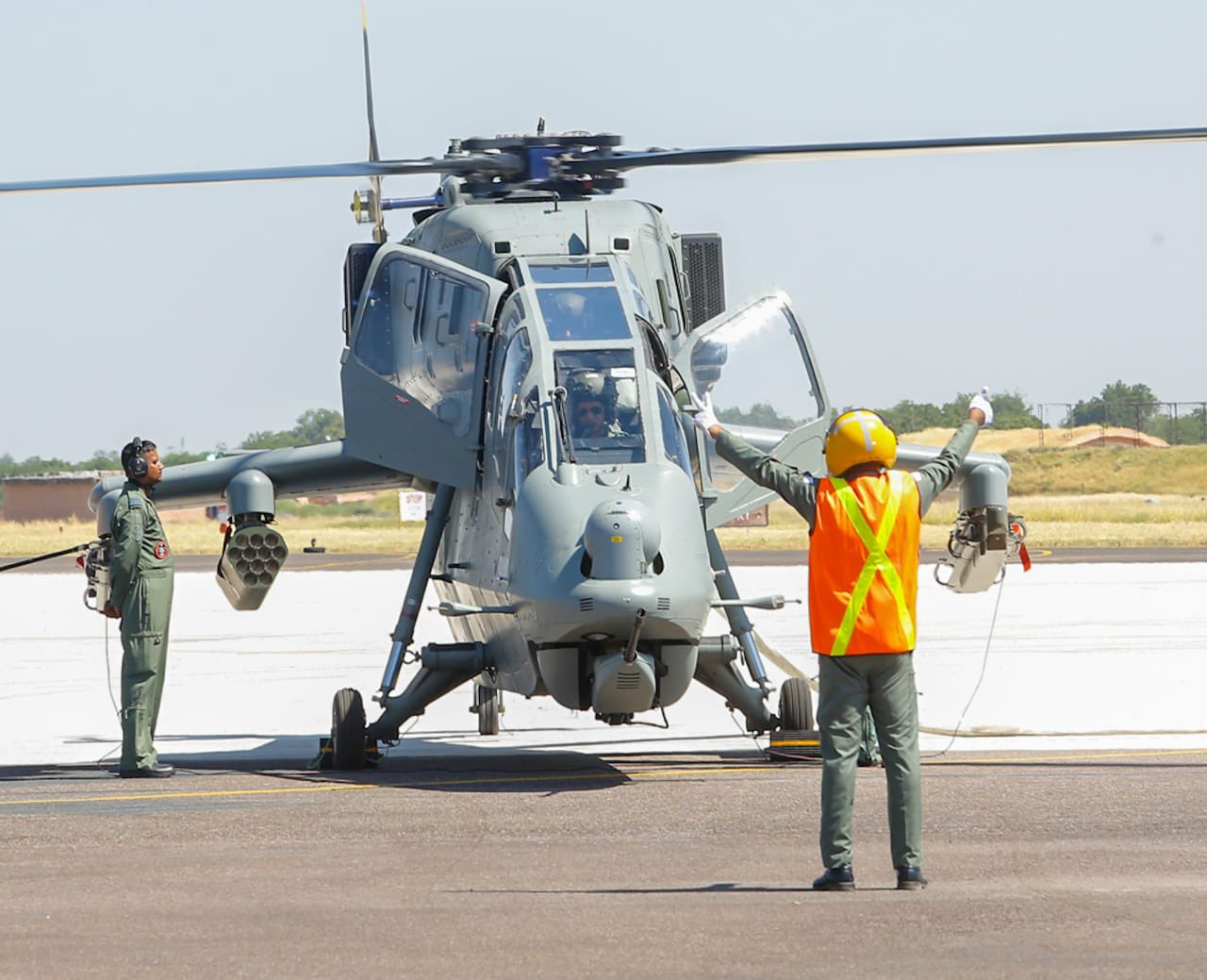India’s Prachand light combat helicopters (LCH) are set for a major leap in capability. Leading defence PSU Hindustan Aeronautics Limited (HAL) is preparing to roll out series production helicopters with seven brand-new systems and four significant upgrades over the limited series production (LSP) fleet currently flown by the Army and Air Force.
From locally-made air-to-ground missiles to directed infrared countermeasures, the new machines are being designed with both lethality and survivability in mind. The enhanced capabilities will broaden the LCH’s mission spectrum. Most of the new systems and those being upgraded will be indigenous.
Prachand 2.0: Which new systems are being added?
According to officials associated with the Rs 62,700-crore project, the series production Prachand will be equipped with the following 7 new systems –
- Indigenous air-to-ground missiles
- Laser-guided rockets
- Advanced electronic warfare suites
- Nuclear detection capability
- Datalinks for secure inter-platform communication
- Obstacle avoidance systems
- Directed infrared countermeasures to defeat heat-seeking threats
These additions will significantly expand the LCH’s mission spectrum, while most of the new equipment will be sourced domestically in line with India’s self-reliance goals, Hindustan Times reported.
New upgrades to boost pilot performance?
HAL is also enhancing critical systems already onboard. The electro-optical pod will be upgraded to sharpen surveillance, tracking and targeting. The helmet-mounted sighting system, which is a vital tool for pilots in high-tempo combat, is also being modernized, the HT report added.
Together, these changes are expected to give crews greater precision and effectiveness in complex combat environments.
Prachand helicopters induction: What does the plan look like?
On March 28, 2025, the defence ministry signed contracts with HAL for 156 Prachands, of which 90 are for the Army and 66 for the Indian Air Force. Deliveries of the same will commence in 2027–28 and conclude within five years. HAL has so far delivered 15 LSP Prachands (10 to the IAF and five to the Army), primarily armed with air-to-air missiles, unguided rockets and a nose-mounted gun.
The new production run marks a scale-up in both numbers and capability.
Why is the LCH critical for India’s combat needs?
Designed for high-altitude warfare, the Prachand can operate above 5,000 metres, ideal for Ladakh-like conditions. It is capable of destroying enemy air defences, striking slow-moving aircraft and drones, demolishing fortified bunkers, and supporting counter-insurgency missions in urban and jungle terrains.
This versatility makes it a frontline asset across diverse battle scenarios, especially for the Indian military units.
How does this boost India’s self-reliance in defence?
The Prachand programme involves more than 250 domestic firms and is expected to generate 8,500 jobs. HAL’s 615-acre Tumakuru facility in Karnataka, inaugurated by Prime Minister Narendra Modi in 2023, will manufacture the fleet. This plant is India’s largest helicopter production hub and is designed to build not just the LCH, but also the Light Utility Helicopter and the future 13-tonne Indian Multi-Role Helicopter (IMRH).
Currently, the LCH has an indigenous content of 45% by value, which will rise to over 65% by the end of production. The government’s positive indigenisation lists, which ban the import of over 500 weapons and platforms, further guarantee that the LCH will be a centre piece of India’s ‘Atmanirbhar Bharat’ defence strategy.
With its combination of precision firepower, electronic warfare protection, and high-altitude performance, the Prachand is being positioned as India’s answer to modern battlefield challenges.
